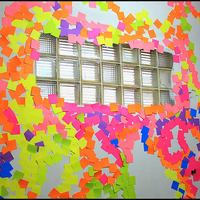
Aug 19, 2010
New Words, New World
In the late 1970s, a new language was born. Ann Senghas, associate professor of psychology at Barnard, has spent the last 30 years helping to decode it. In 1978, 50 deaf children entered a newly formed school—a school in which the teachers (who didn't sign) taught in Spanish. No one knows exactly how it happened, but in the next few years, on school buses and in the playground, these kids invented a set of common words and grammar that opened up a whole new way of communicating—and even thinking.